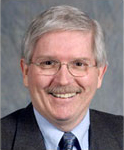WSU welcomes history students for research exploration

From sewing a miniature book binding to seeing how to shape a stone tool, nearly 200 eighth-graders from Lincoln Middle School in Pullman took a whirlwind tour of library sciences and anthropological research at WSU to prepare for a special history project this spring.
The teens visited the WSU Libraries and the WSU Museum of Anthropology to glean ideas for their upcoming “Night of the Notables.” They are responsible for investigating an important historical figure, writing a paper, and answering questions while dressed as that figure in an event for parents and friends.
More than preparation for their big event, the field trip gave participants a chance to explore topics and places they might not normally see, said LMS history teachers.
Learn more about the middle-schoolers’ hands-on learning experience at WSU.


